On a hillside in Kunia, Oahu, sits a squat rectangular building with the words Kō Hana Rum stenciled on the front. It looks unremarkable from the outside. The inside is sparse too, populated with little more than a simple bar for tastings and a couple racks selling t-shirts. From first glance, you’d hardly know the founder spent years behind the scenes, searching out and cultivating heirloom sugarcane, much of which was lost during Hawaii’s sugar boom. But there is much more Kō Hana Rum than appearances suggest.
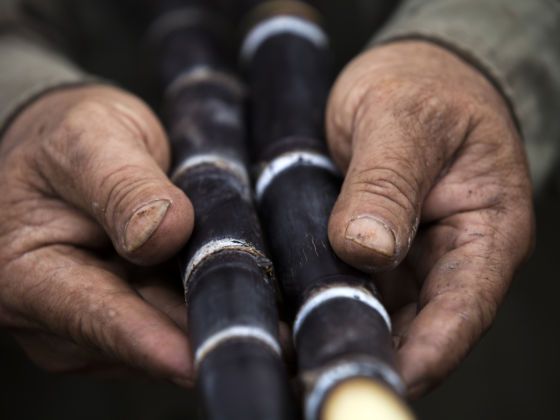

This Rum Distillery Is Helping Hawaii’s Heirloom Sugarcane Thrive Once Again
Just behind that green building, a steep dirt road, which passes through the small aquaponic farm next door, will lead you into the hills above the distillery. Along the path, the grass grows taller than an adult man. The longer you walk, the more it feels like the rest of the world is slipping away, until you find yourself standing among the curved stalks of the distillery’s sugarcane. Arched black bodies of cane spiders scurry among the roots, and the rolling green mountains capped by grey clouds are just visible in the distance.
Sugarcane can grow in wide open fields and near rivers, and it can be found everywhere from Indonesia to Jamaica. Kō Hana’s sugarcane farm rests at the base of Kunia’s nearby mountain range. A muddy path cuts through the densely packed rows of cane. The tall, dusty brick red and beige stalks obscure your view of the world outside the farm. Bouquets of dark purple and emerald green leaves burst from the top of stalks. All that’s visible for miles is sugarcane, and above there is nothing but blue sky. The farm is a magical, peaceful place, especially on an overcast day when the clouds hang low in the sky, and there’s no sound traveling up from the nearby road.
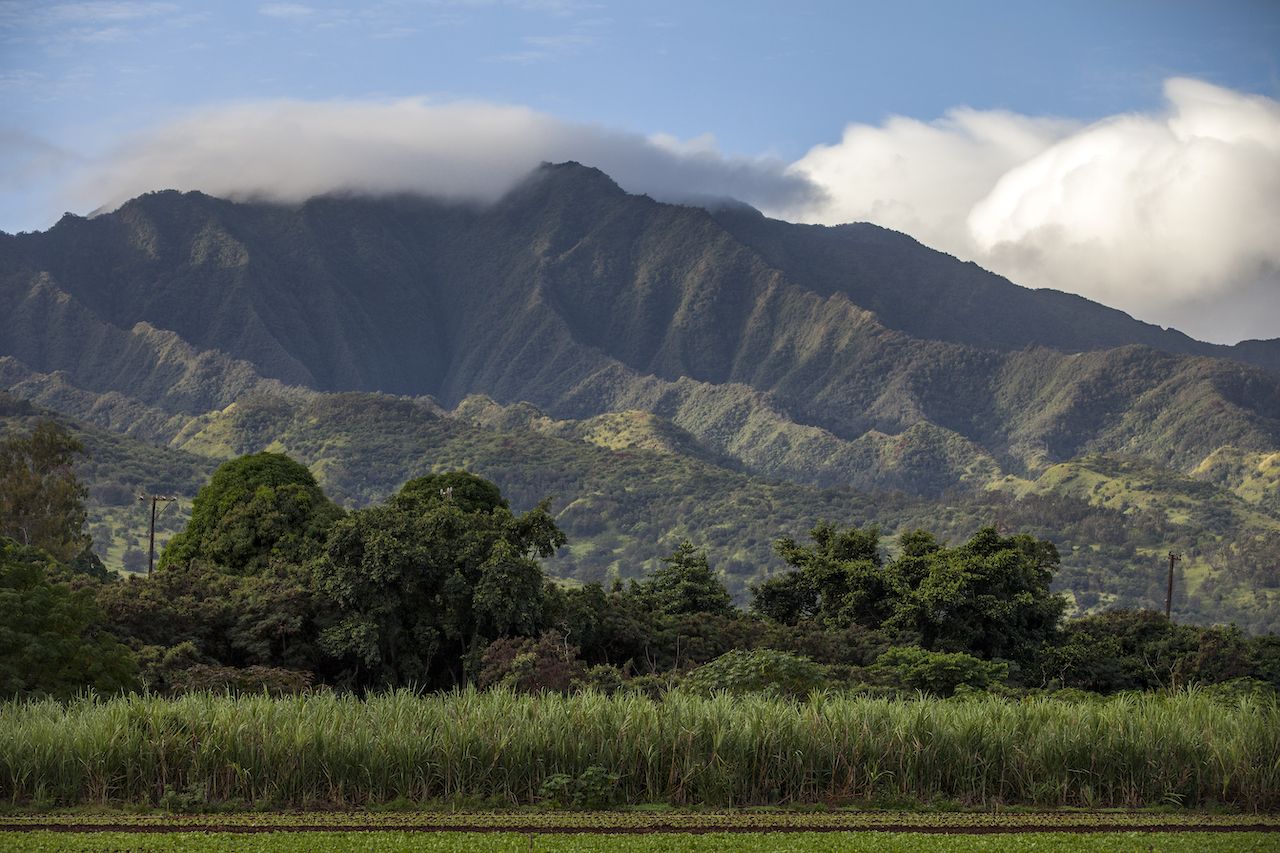
Photo: Kō Hana Distillers
Sugarcane has been growing in Hawaii for a long time — at least 1,000 years — and its uses and purpose have grown and changed along with the islands. Sugarcane has seen every phase of Hawaii’s history.
Sugarcane, or ko in Hawaiian, is one of 27 canoe plants (others include taro, yam, and kava) that early Polynesian settlers brought to the islands between 400 and 500 AD. Sugarcane became a tool of Hawaiian spiritual practice, often invoked during prayers to the gods of sailing and canoe building. It was also used to coax lost lovers back home, sweeten the taste of bitter medicine and heal wounds, and as thatching for homes.
In 1835, Ladd and Company, founded by a group of friends from New England, opened the first successful sugarcane plantation (another operation tried in 1825 but closed two years later) in Koloa, Kauai. Ladd and Company’s arrival in Hawaii marked the beginning of a period of economic prosperity (mostly for the European and American businessmen who settled there), tumult, and transition.
Though the United States acknowledged Hawaii’s independence in 1842, European and American merchants swooped in to open ranches and farms that would exploit the island’s fertile land. By the late 1840s, the islands were exporting silk, beef, coffee, and molasses. In 1843, the British unsuccessfully claimed Hawaii as its own during an occupation that lasted just five months. Meanwhile, missionaries worked tirelessly to convert the indigenous population to Catholicism, and the islands began printing paper money and operating a mail service. Fifty-eight years after Ladd and Company opened its plantation, the United States overthrew the Hawaiian monarchy, and five years later the islands became a US territory.
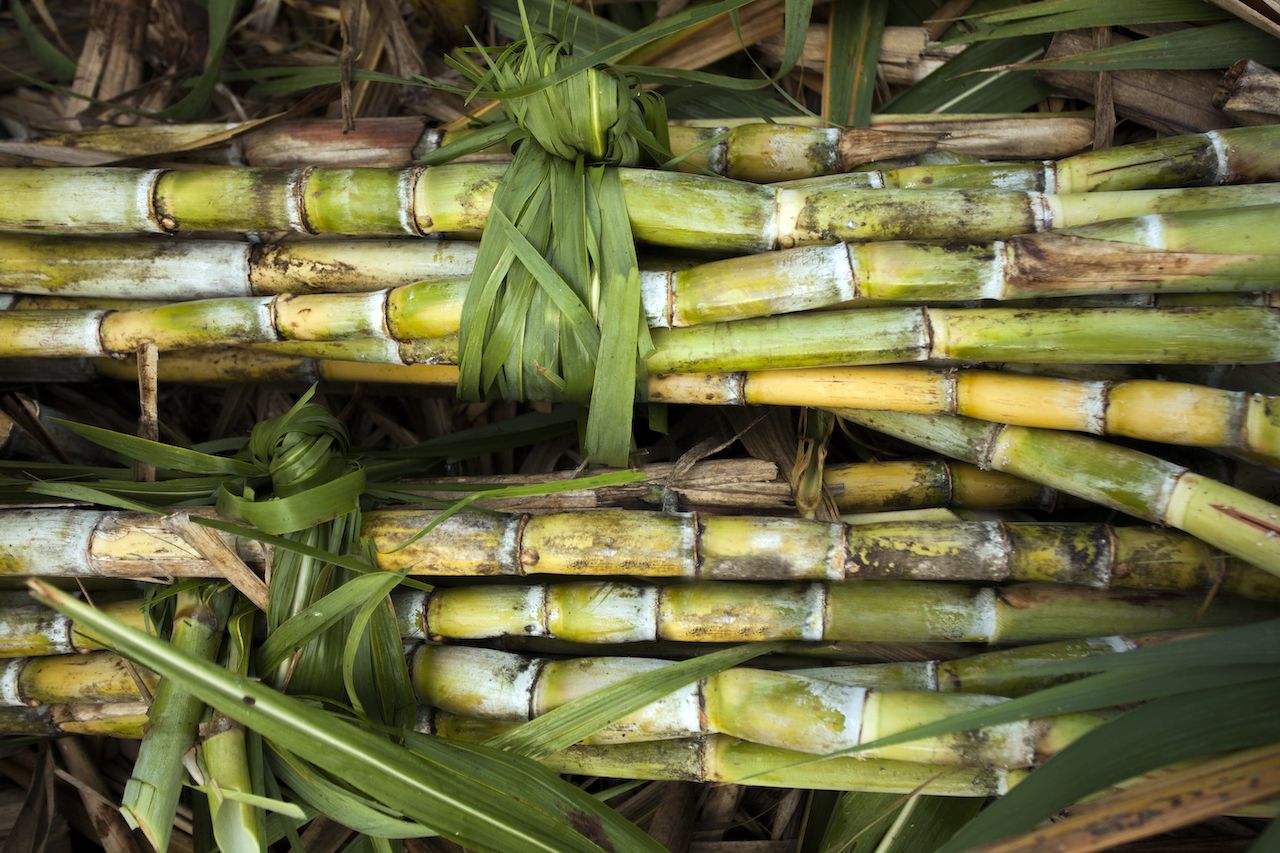
Photo: Kō Hana Distillers
Sugarcane plantations transformed the crop from a cultural pillar for the island’s indigenous people to an economic windfall for the island’s colonizers. The sugar industry exploded, and Hawaii’s economy quickly became inseparable from sugarcane. Plantations opened throughout the islands — even Kō Hana occupies a former Dole plantation — shipping most of its product to the mainland United States. Some 200 years later, that part of sugarcane’s history was wiped away, too — the last sugar mill, in Maui, closed in 2016. Today, sugar isn’t produced from sugarcane anywhere in Hawaii, and sugarcane itself is rarely grown on local farms.
Robert Dawson is helping change that. In 2008, Dawson relocated from the Southwest to Hawaii, where he wanted to raise his son. Dawson worked in tech and had no experience in distilling or farming. But when he arrived on Oahu, sugarcane caught his attention. After reading a book about Hawaii’s native plant life by Dr. Noa Lincoln, a professor of indigenious crops and traditional farming methods at the University of Hawai‘i at Mānoa, he didn’t need any more encouragement: Dawson decided he would open his own “grass to glass” distillery for agricole rum produced with sugarcane rather than the molasses most rum producers use. He also decided he would honor Hawaii by growing only heirloom sugarcane on an adjacent farm. Dawson had found his calling.
Dr. Lincoln — who would eventually analyze the genetics of the cane Dawson found in the wild, and help educate Kō Hana staff on the significance of sugarcane in Hawaiian culture — calls heirloom sugarcane “kupuna crops,” or crops developed by Hawaii’s elders, “prior to European arrival and the development of the sugarcane plantations.” Lincoln adds that it is “likely that most varieties were developed here in Hawaii from the original varieties introduced by the Polynesian wayfinders.”
Finding heirloom sugarcane proved difficult. Hawaii’s sugar industry wreaked havoc on heirloom strains of sugarcane. Sugar plantations instituted breeding programs, which developed sweeter, disease- and pest-resistant varieties of sugarcane. The farms also practiced monocropping, planting the same modified variety of sugarcane on their land year after year. These practices demolished the islands’ natural biodiversity. To find heirloom sugarcane, Dawson had to look in the wild.
Dawson, alongside his business partner, Jason Brand, decided to go straight to the people. He posted notices on Craigslist, asking anyone with wild sugarcane growing in their backyards if he could take cuttings. He gathered stories from locals about where they had seen sugarcane growing in vacant lots and on the side of the road.
Dawson marched through botanical gardens, hunting down random stalks and asking the botanists tending the plants if he could take pieces home. He also began researching the lore surrounding sugarcane and found that it’s at the center of stories connecting the land and the sea, that the heirloom varieties shared names with shark gods and fish — history that nearly disappeared after the sugar plantations moved in.
After three years of searching, Dawson managed to gather around 91 sugarcane plants with different names and cultural significance, some with similar characteristics. Kō Hana Rum now grows 36 genetically unique varieties of sugarcane, but there are thousands of varieties still left to be discovered all over the pacific.
“Of the 36 varieties that Robert has, a number of them are not Hawaiian varieties, but are heirloom varieties from elsewhere in the Pacific,” Lincoln explains. “He likely has about 25 that we feel confident are kupuna [heirloom] varieties. My own collection is about 80 canes, maybe 35 of which I feel confident are kupuna varieties.”
The farm, with Dawson’s freshly planted sugarcane, opened for business in 2009. Dawson spent the next four years learning to farm and distill as the sugarcane grew up around him. Manulele Distillers (the company’s original title, named for the first strain of sugarcane Dawson found) where Kō Hana Rum is produced debuted its first bottle of rum in 2014.
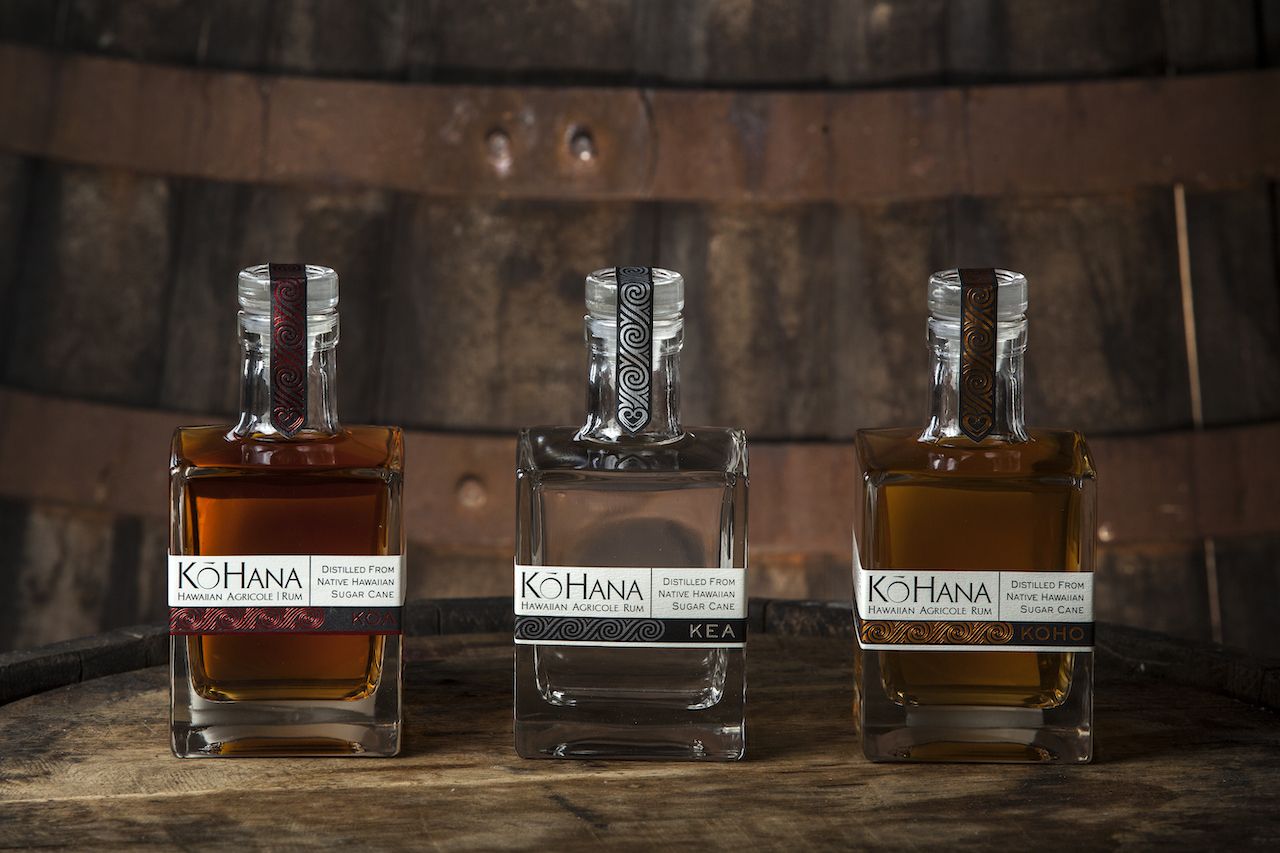
Photo: Kō Hana Distillers
Hawaii doesn’t manufacture glass, so the distillery needs to ship in bottles, but Dawson did ultimately achieve his original goal: Everything that goes into Kō Hana Rum is produced on the adjoining farm.
“We are a vertically integrated system — grass to glass, as we like to say,” says Kyle Reutner, Kō Hana Rum’s brand manager. “That’s frankly unheard of. [Other distilleries] still need to source something from someone else.”
According to Reutner, 97 percent of rum distillers produce their spirits using molasses while only about three percent use sugarcane — and that’s worldwide (an entirely different spirit, called cachaça, is distilled exclusively from fermented sugarcane in Brazil). Distilling rum from sugarcane is more difficult for a couple reasons: Once the sugarcane is harvested and the cane juice pressed, it needs to be fermented and distilled immediately (or refrigerated, which can get expensive) so that it doesn’t ferment on its own and turn sour. That’s why it’s essential for Kō Hana to be vertically integrated: The sugarcane is harvested in essentially the same place where its juice is distilled.
Secondly, sugarcane is a seasonal crop in most places (Hawaii, where it grows all year, is an exception). So if you’re distilling rum with sugarcane exclusively, you’d have to shut down your operation for part of the year. Molasses — a byproduct of the sugar refining process — on the other hand, is available anytime (most distillers buy it from sugar refineries) and stays fresh for years.
“If you are making an agricole rum, it’s for cultural reasons or flavor reasons,” says Richard Foss, author of the book Rum: A Global History. “Because making agricole rum is more expensive and the process is going to take more work and more of a time crunch on your distillery.”
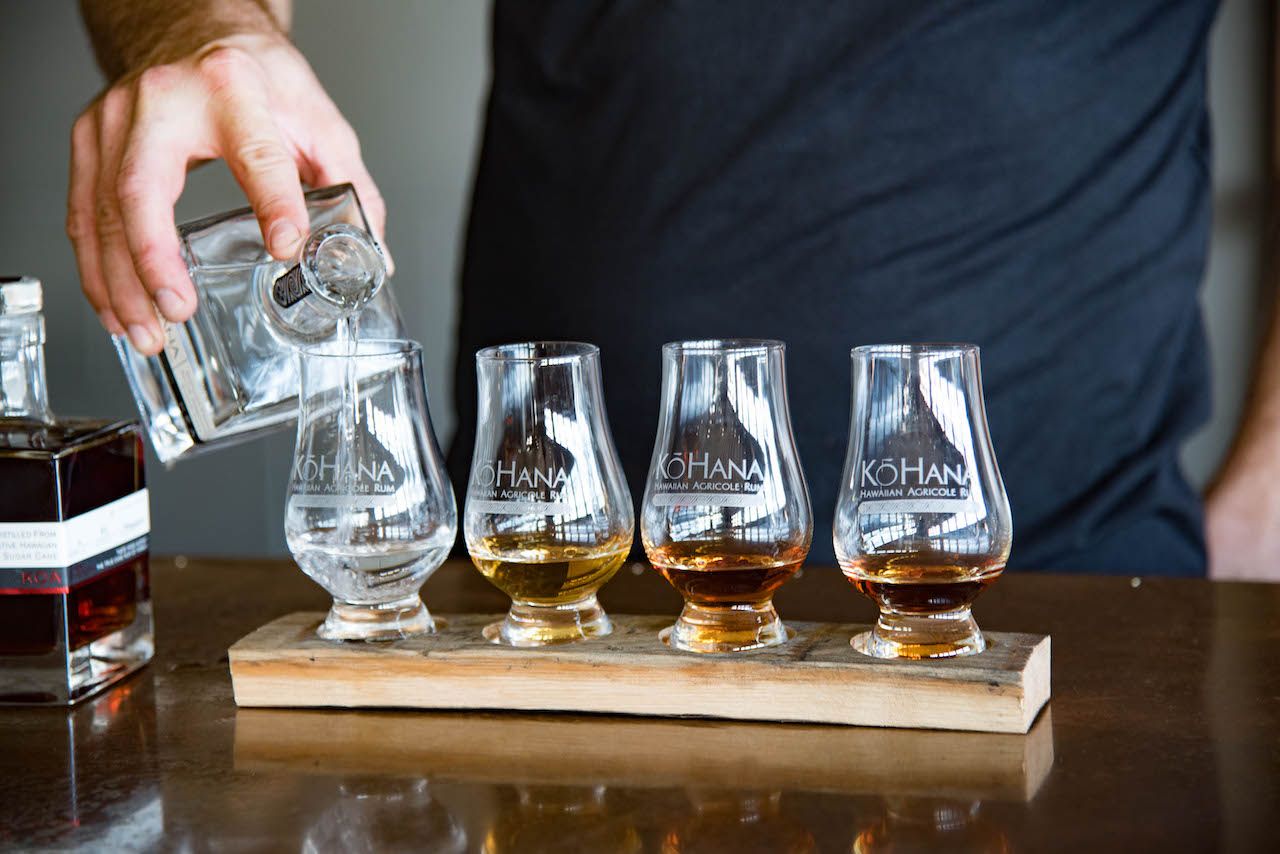
Photo: Kō Hana Distillers
Agricole rum and molasses-based rums are so distinct that Foss thinks they shouldn’t even be in the same category. The dominant flavors in the latter are sweet caramel and vanilla, while the former has more herbal, grassy notes. And agricole rum has a more palpable terroir, informed by the soil where sugarcane is grown, whether it be at the mouth of a river in Venezuela or at the base of a volcano in Hawaii.
Kō Hana is interested not just in sugarcane as a cultural artifact but also in the more elegant, complex flavors it brings out in rum. And if that wasn’t already enough, the sugarcane farm also supports Hawaiian agriculture at large.
“Hawaii needs to grow more farmers,” Reutner explains. “We need sustainable jobs that the next generation is going to want to do. If nothing else, if you don’t like our rum, at least we’re providing an outlet for land use that’s not just hotels. It’s something a little more honest and of the earth.”
The act of growing heirloom sugarcane, a form of agriculture which Reutner says hasn’t existed in a “major capacity since Hawaii had a king” alone feels radical. But respect for the sugarcane, its history, the land where it’s grown, and the people who harvest it, are also significant aspects of Manulele’s business model.
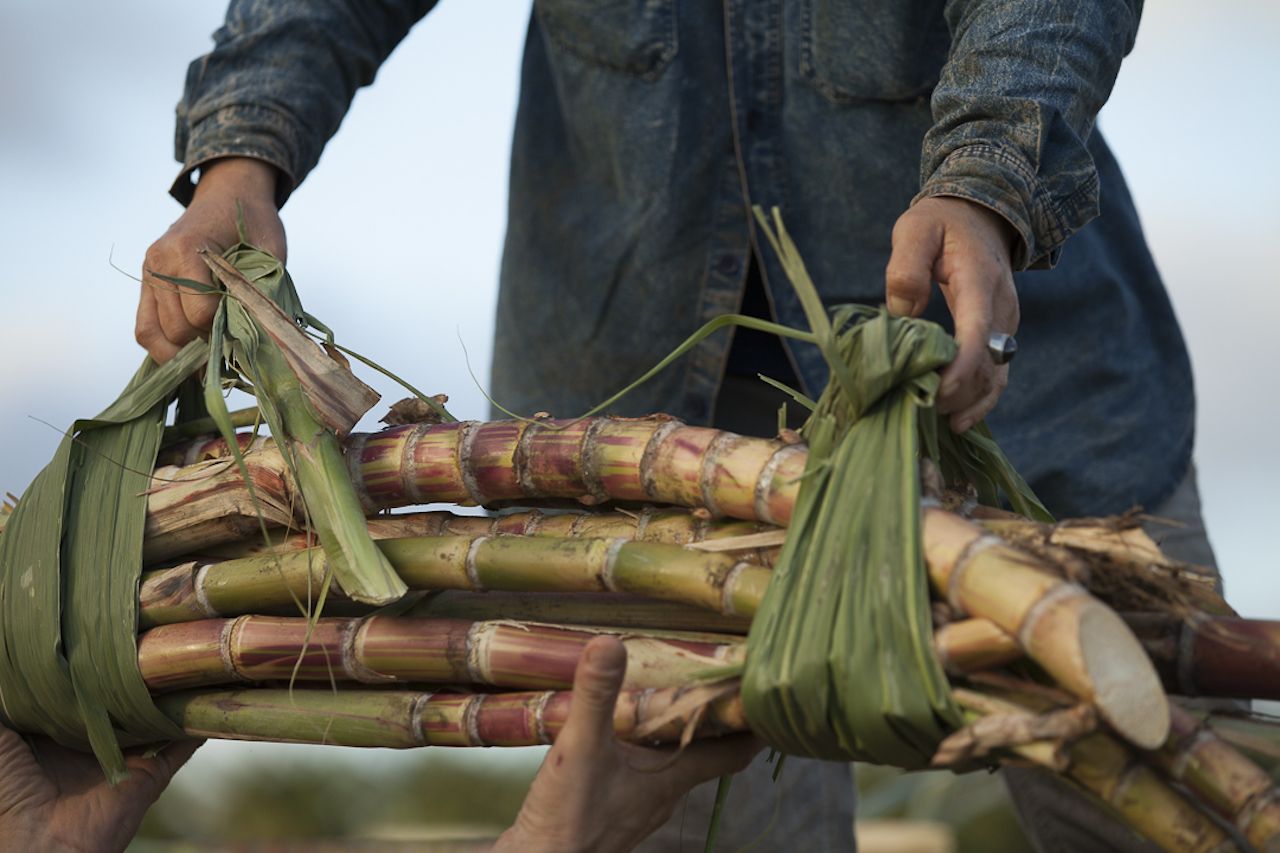
Photo: Kō Hana Distillers
Kō Hana doesn’t burn its sugarcane fields — a practice that burns the leaves off the stalks before harvest, dumping waste into the soil and pouring smoke into the atmosphere — and while the sugarcane itself is harvested exclusively by machete, that might be changing soon. In the aftermath of a series of increasingly hot summers, the distillery is recalibrating the balance between its sustainability goals and the safety of its workers.
“The output of hand-cut cane is putting a strain on our farmers. You have to start thinking about the health of your farmers, too. We have two guys under 25, and I want them to retire with me. I want them to have good lives,” Reutner says.
Harvesting the sugarcane sustainably (and safely) is one part of the equation. Kō Hana also recognizes that treating its ingredients with care simply makes for a higher quality final product. Sure, being environmentally friendly is important, but so is making rum that tastes good.
“It is unlike most rum out there in the world,” Reutner says. “We aren’t trying to eliminate flavor. The goal is to bring out the flavors of the sugarcane. Generally speaking, it’s going to be vegetal, and it’s going to be fruity and tropical with lychee, and banana.”
In order to draw out the complex flavors of the rum, Kō Hana has adopted an adventurous barrel aging program. The distillery has used barrels once home to tequila, peaty scotch, and barley wine.
“All of the good intentions in the world wouldn’t mean anything if we weren’t making something spectacular,” says Reutner.
Good intentions go a long way. In 2019, it is refreshing to encounter a distillery that can see beyond its annual profit. Kō Hana takes advantage of its ability to educate the public not just on the production of rum but also sugarcane’s place in Hawaiian history. The people who walk through the distillery’s doors get much more than a rum tasting.
“They’re going to learn some part of Hawaiin culture that they’re just not going to get at the more saccharine, sweet hotel shops,” Reutner says. “We’re guests to this culture, but we’re sharing stories that will hopefully teach people to be more respectful of the land, and to recognize that this place will be here after they leave too.”